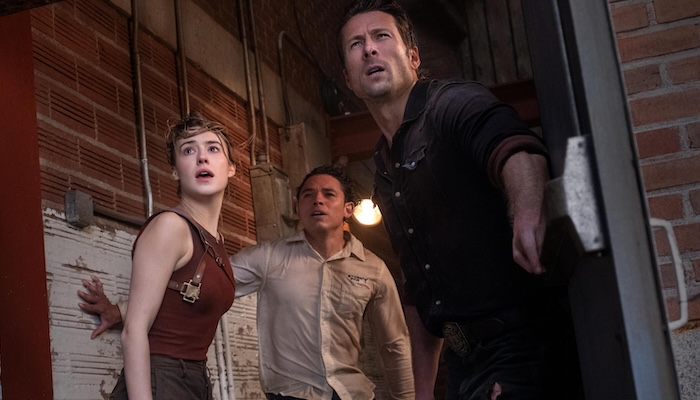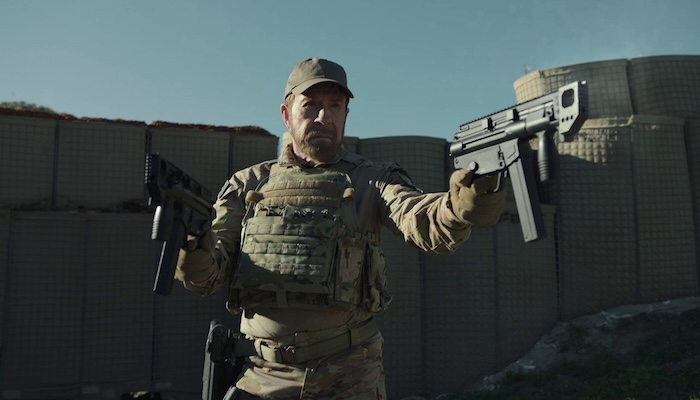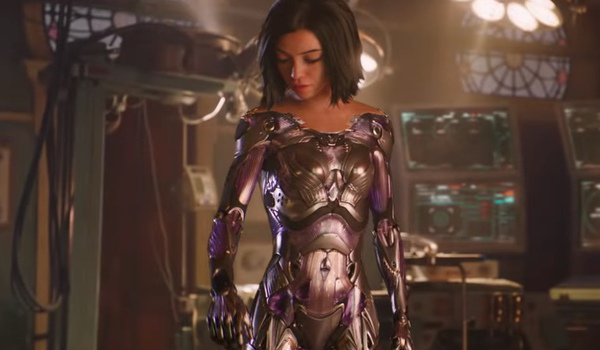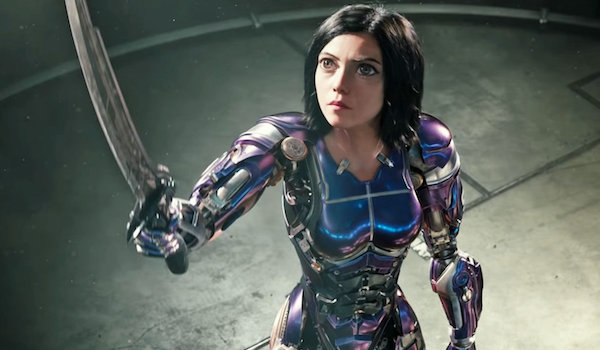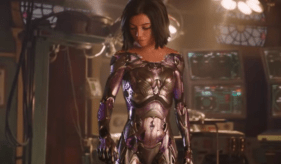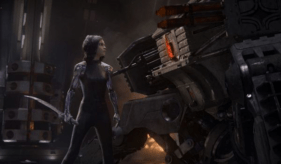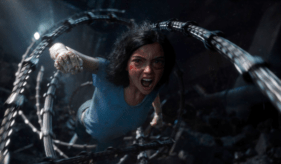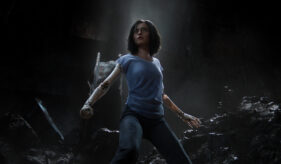Film Review: ALITA: BATTLE ANGEL (2019): A Movie of Moments Undermined By its Own Content (And lack thereof)
Table of Contents
The Love Story and Cybernetics
The love story between Alita and Hugo, despite is artificial pathos, strikes a nerve with the viewer. The viewer sees Alita’s instant interest him and goes with Hugo’s eventual interest in her. The problem is that in the anime film this movie is based on, Alita looks like a real human being, including her eyes. In the live-action film, her head and hair look artificial. Not enough work was put into the cybernetic plotline of Alita: Battle Angel for the viewer to see how a human being could fall in love with something put together in a factory. Cybernetics and that type of love exist in a giant explanatory void that is never approached, delved into, or filled by the plotline of this film. In both Blade Runner films, the artificial beings look one hundred percent human thus when they fall in love with humans or vice versa, its easy to understand. In Alita: Battle Angel, the artificial beings look like monstrosities. In the Blade Runner films, the person or company that makes the artificial beings (and what they are used for) is explained. In Alita: Battle Angel, none of that foundation is present.
The industry of cybernetics in Alita: Battle Angel is comical. It has no cost and is everywhere, like air and water. In a film using current realities as a baseline, cybernetics would be rare, exuberantly expensive, and would resemble the human body parts that they are replacing à la Logan. In Alita: Battle Angel, human beings are walking around with factory machinery sewn to their shoulders. Other horrific ‘replacements’ are so common, no one is bothered by the sight of them. Also at issue is the sheer number of amputees and people that seem to have voluntarily given up part or all of their human bodies for cybernetic ones. Why would they do that? For what purpose? Is everyone in the future rich, enabling them to be able to regularly afford $600,000 surgeries (supposition based on the fee and material costs for an artiforg in Repo Men)?
Descent from Average to Below Average
The third act of Alita: Battle Angel is where the narrative of the film falls apart and the missed opportunities and inconsistencies begin stacking up, destroying all the surprising and somewhat rewarding work put into the first two acts. It’s like James Cameron and Laeta Kalogridis decide to end certain story-lines in a flippant way with no regard to how the viewer, who has traveled with these characters on their journeys, would take it.
Dr. Chiren (Jennifer Connelly)’s death is given short shrift in Alita: Battle Angel and is off-screen, two egregious faults within the script. Why kill such a pivotal character off-screen? It’s exactly like the massive mistake made regarding Cyclops’ death in X-Men: The Last Stand all over again. Dr. Chiren’s death is given no weight. It isn’t a meaningful death. It isn’t a comeuppance death. It isn’t even a “you reap what you sow” death since Dr. Chiren eventually sees the error of her ways and begins to reverse course. It is a completely vapid death, with zero emotional impact.
When the grand reveal of Dr. Chiren’s death happens and the glass box is shown containing her body parts, the box might-as-well be empty. Here’s why: a.) Dr. Chiren is a poorly written and unsympathetic character so the viewer doesn’t care that she is dead and b.) what is displayed in the box looks like a child’s chemistry set with toys floating in bubbling water. It’s supposed to be a horrific moment yet it falls flat.
– Non-review Aside Begins –
One way of doing the horrific version of this scene would be:
Alita enters the room where Dr. Chiren’s dead body is located. Dr. Chiren’s dead arm is over hanging the left side of the table, still connected to her body. The camera is to the left, underneath, and away from the arm so that the lens can clearly see who enters the room. Alita’s eyes widen in horror as she approaches the table and sees who is on it and what has become of them. Then Alita sees the glass box with the harvested body parts in it. After a few moments, a male voice behind Alita says: “That is the only way someone from down here gets to Zalem.”
Another way would be:
Dr. Chiren is dead on the table and two bio-techicians are “unwinding” her while having a casual conversation à la David Mitchell‘s Cloud Atlas as a commercial about Zalem begins playing on a monitor in the room.
The video talks about the beauty of Zalem, the sights and sounds of Zalem, the pleasures and opulence of Zalem, as Dr. Chiren’s dead face stares at the ceiling and her body softly rocks as her organs are removed, her eyes are sucked out of their sockets, and then the crescendo, a bone saw and brain detachment, the camera on her face for almost all of the procedures (the viewer’s imagination filling in the rest via the various sounds of the procedures.)
That would have been poignant. That would have been poetic. That would have been affecting and could have been shot it in a way to maintain the PG-13 rating.
Instead, what does the viewer get in Alita: Battle Angel? An empty box.
– Non-review Aside Ends –
Related Articles
FilmBook's Newsletter
Subscribe to FilmBook’s Daily Newsletter for the latest news!


